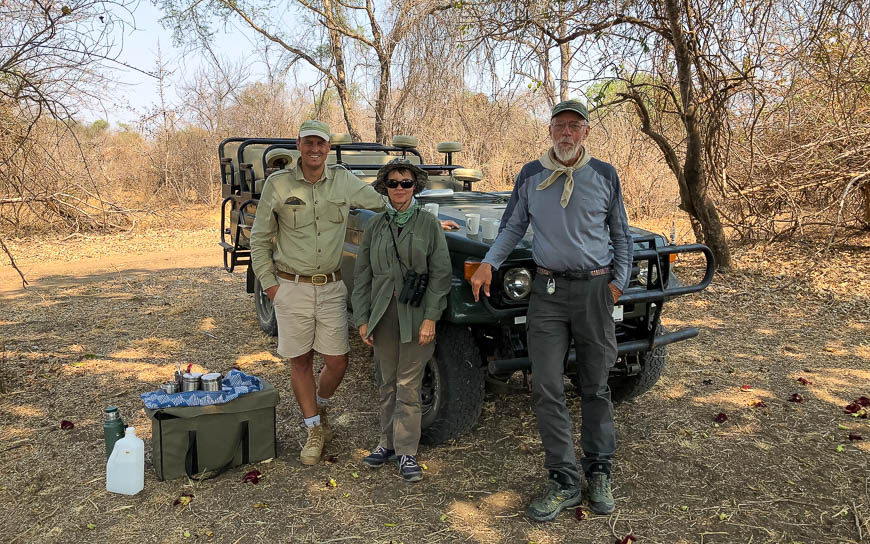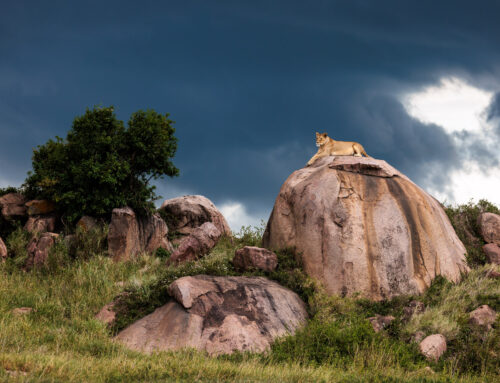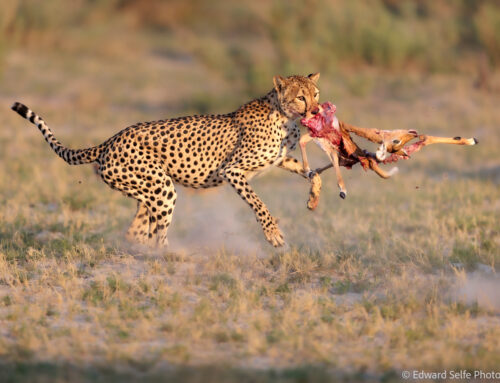My final dry season photo safari started at the beginning of October. This month is known for its intense heat, dusty dramatic light and impressive sightings! But it was also for the wonderful carmine bee-eater colonies that my guests were particularly keen to visit at this time of year.
I had been in communication with Sue & Michael for about a year and it was clear that they were experienced travellers and knowledgable wildlife experts….as both are entomologists! It was great fun to share stories and learn from them while showing them around the South Luangwa. Debbie, who joined us from Australia, was a great addition to the group and we all enjoyed many shared interests which made conducting the safari easier for me!
Knowing that Michael and Sue particularly had travelled 10,000 miles to see carmine bee-eaters, I didn’t make them wait any longer, and we headed straight to the nearest colony as we left Kafunta River Lodge on the first afternoon.
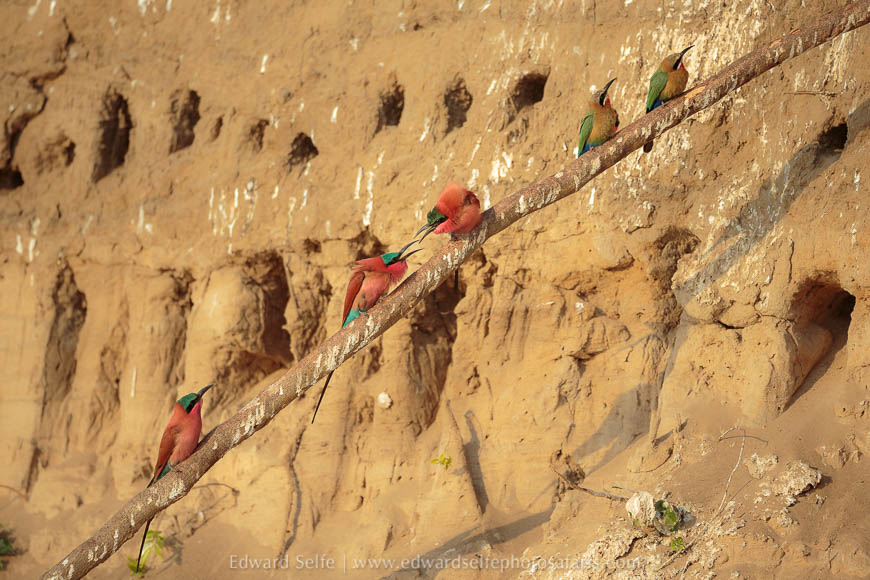
Kafunta has the wonderful advantage of crossing the river into the National Park via a private pontoon, or driving through the water as we were doing by this late time in the season. Driving through the water is exciting, but crossing at water level also highlights the importance of that narrow channel to the surrounding wildlife; as we approached the channel, waterbirds could be seen feeding in the muddy shallows and almost immediately after we crossed, a herd of elephants appeared and shambled across the sand to quench their vast thirsts.
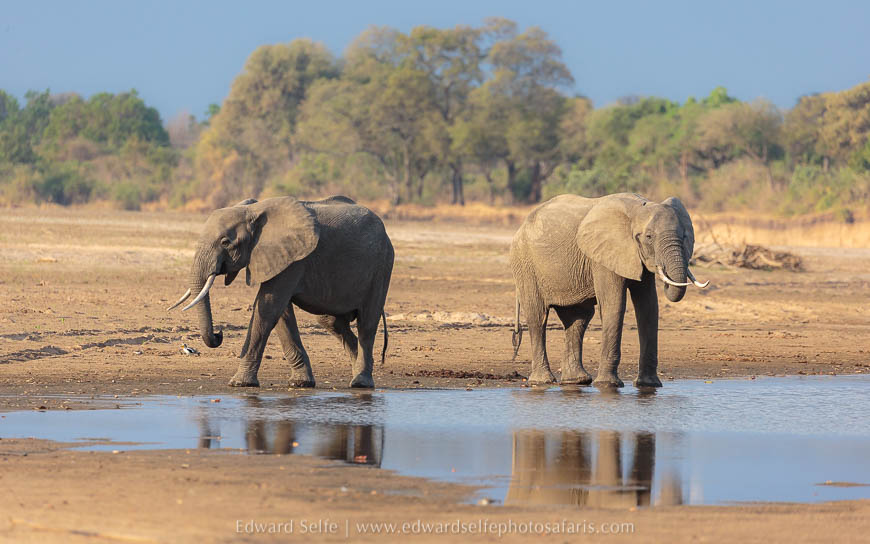
Debbie had been travelling in Kafue NP immediately before and both Michael & Sue had been on safari widely, so I wanted to show them the specialities of the Luangwa. At this time of the year, the highlights are the river (and the role that it plays in everyone’s daily life), the stunning scenery as the trees push out new leaves in preparation for the rains and, of course, the Luangwa’s famous leopards and lions! So we set out over the next few days with these goals in mind.
It didn’t take long. During the first morning, kudu alarm calls lead us to some resting lions. And after photographing bee-eaters again on the second afternoon, we picked up signs that there was a leopard nearby. It actually took a while to track it down, since it was hidden high in a tree, but once we found a good angle, she gave us wonderful views as the light started to dim. Adding a bit of gentle spotlight at the right moment allows the blue of the sky behind to show through and give a superb effect.
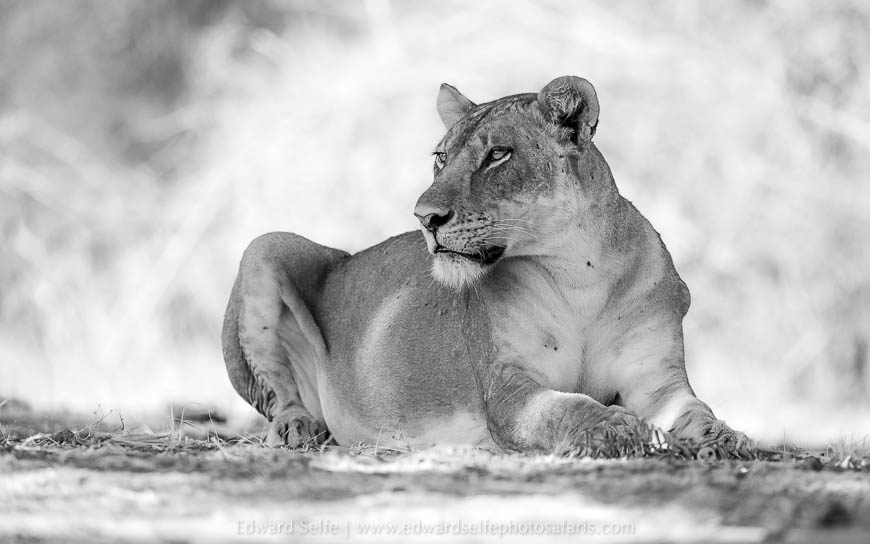
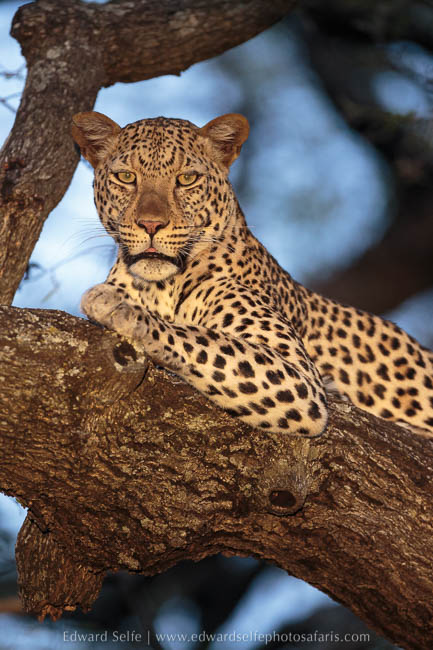
Heading home, we had one of the best sightings of a porcupine that I’ve enjoyed in 10 years here. It was foraging along the top of the river bank and moved steadily back towards the bush as we watched. So often they are in the thickets that it was a treat to see one so clearly.
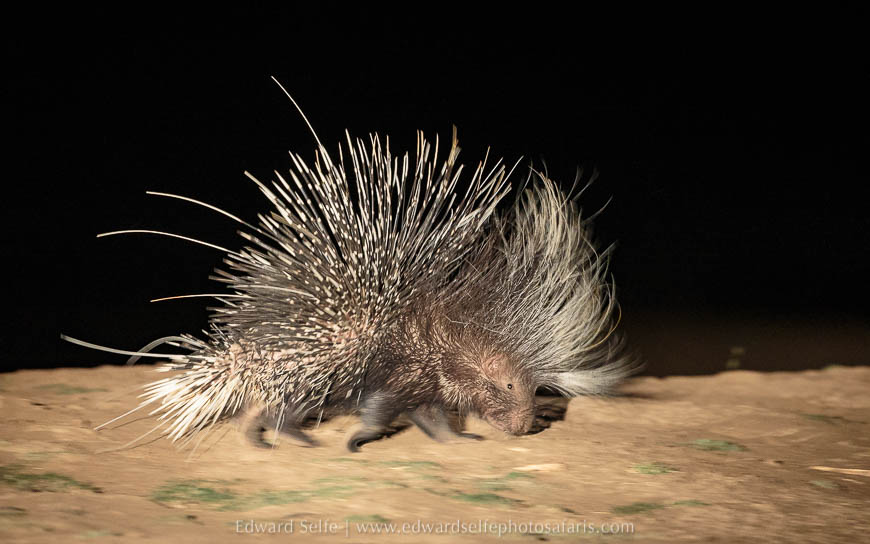
We worked hard to track down the same leopard the following morning, starting from the area we left her in the evening. We found her quickly and I noticed immediately that she was nervous and unsettled. After snarling briefly, she descended from her tree, and glanced back towards a grove of large ebony trees nearby. I made a note to check that area for a cub, another leopard or perhaps an abandoned carcass, and we followed her as she patrolled the thickets towards the river. We lost her in the thick bush (where photos were tricky and I clipped off her tail!) but when I headed back to the grove, I found an impala carcass that she had clearly killed during the night. This explained her nervousness as she had been forced to leave the carcass when the light came up, but she had not managed to stash it safely in a tree.
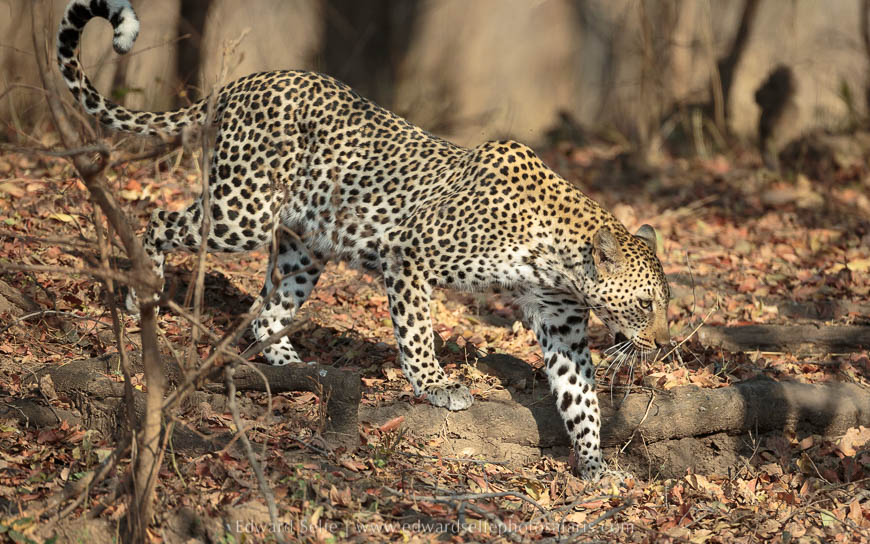
I knew that she would not return to the carcass before dark, so we left the area and tried to let the area settle down; though tawny eagles, bateleur eagles and hooded vulture were drawing attention to the site! We returned that evening in the dark, and decided to wait. Sure enough, with the spotlight, I caught sight of her eyes approaching us, and she quickly reclaimed her carcass and began to feed!
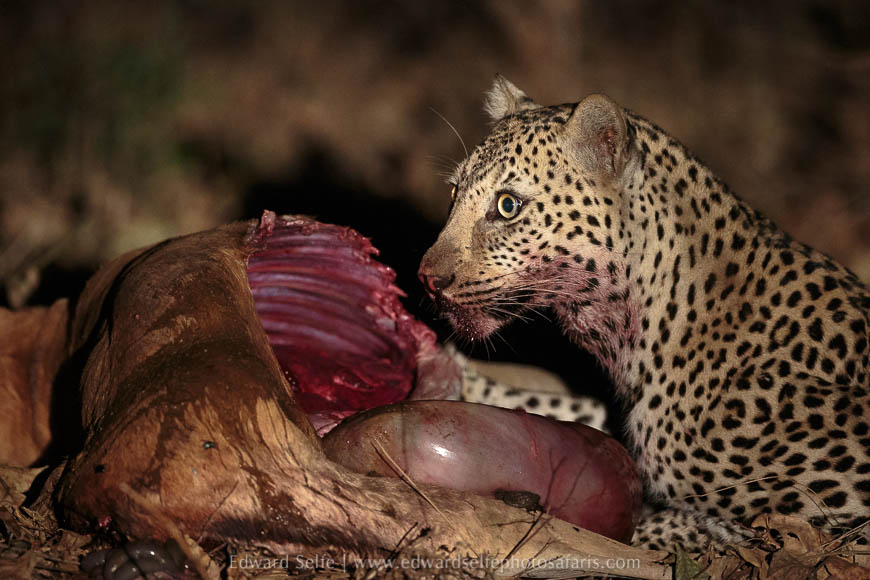
It was incredible to watch her feeding and to listen to the sounds of her carnassial teeth cutting through the skin to reveal the flesh underneath. At one point, she broke into the spleen and large quantities of dark red blood emerged; she lapped this up, giving support to the concept that leopards avoid needing to drink water by taking on as much fluid as possible from their carcasses.
Exhilarated by this, we returned to camp to find not 1, but 2, Pel’s fishing owls on the dead trees in front of the camp. There is a permanent water hole fed by a natural spring right in front of the dining deck, and the owls have clearly worked out that this is a great hunting location for the peak of the dry season! Sue, particularly, was interested in birds so being able to watch the owls each evening while we had dinner was pretty special!
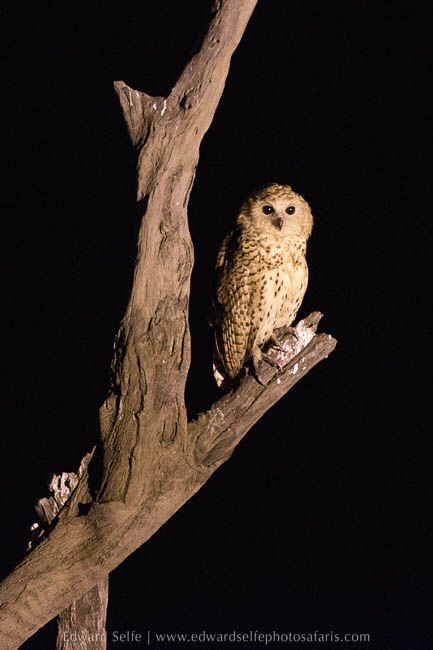
Over the next few days, the sightings came in steadily. We worked on a variety of techniques, and made use of whatever came along. The lighting conditions in October are very flattering, with soft non-directional light, but this limits the chances to experiment with back-lighting so we worked on other ideas such as panning blur and capturing sharp images of birds as they took off from perches.
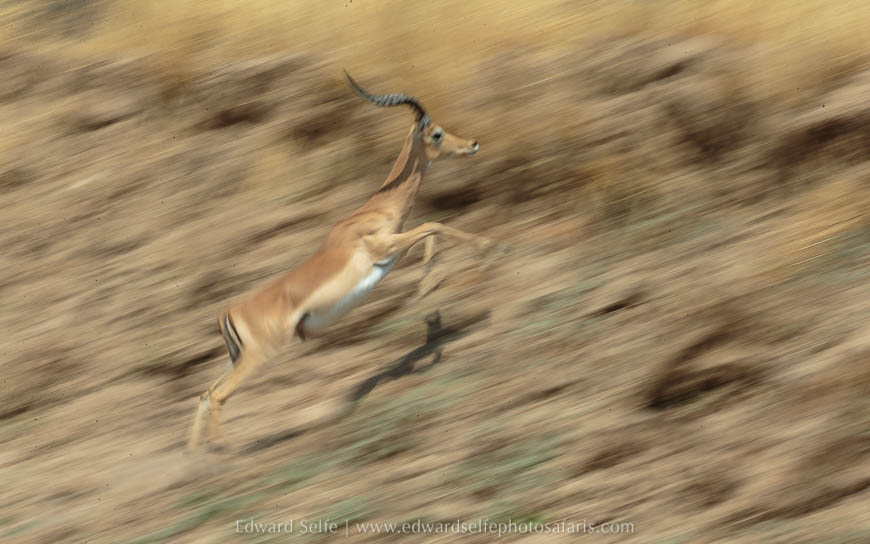
Among all the usual sightings that Luangwa always offers, we were lucky to have a couple of very special encounters too. While crossing the river one morning, we were met by two elephants who were also trying to cross. They appeared to get their directions a bit wrong and ended up in an area of very deep water. After emerging, with distinct lines across their faces from the tide-mark, they splashed through the water towards us in a display of ears, trumpeting and spray!
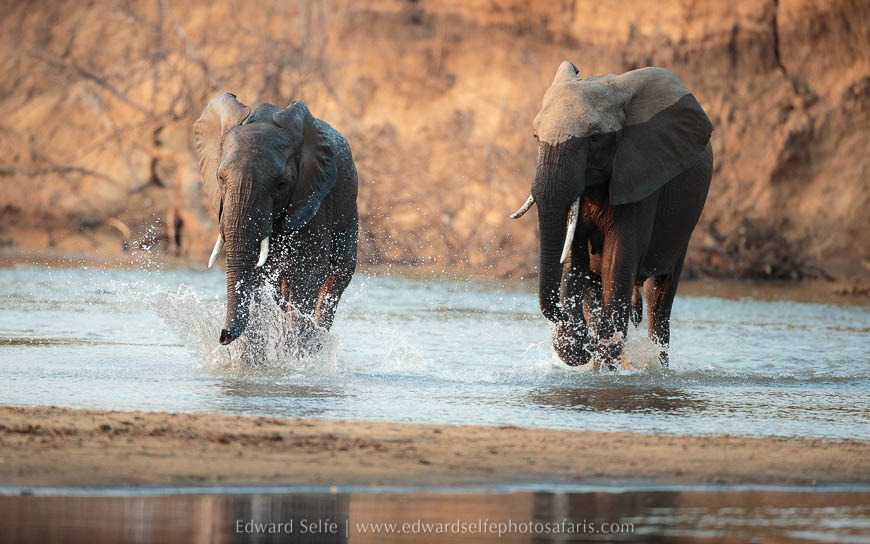
We also had a lovely afternoon encounter with 3 lion cubs from a small off-shoot of the Mfuwe Pride. They had been left by their mothers when they went hunting and were starting to become active in the late afternoon. They played together occasionally and we spent a couple of hours with them as they grew in confidence in the fading light.
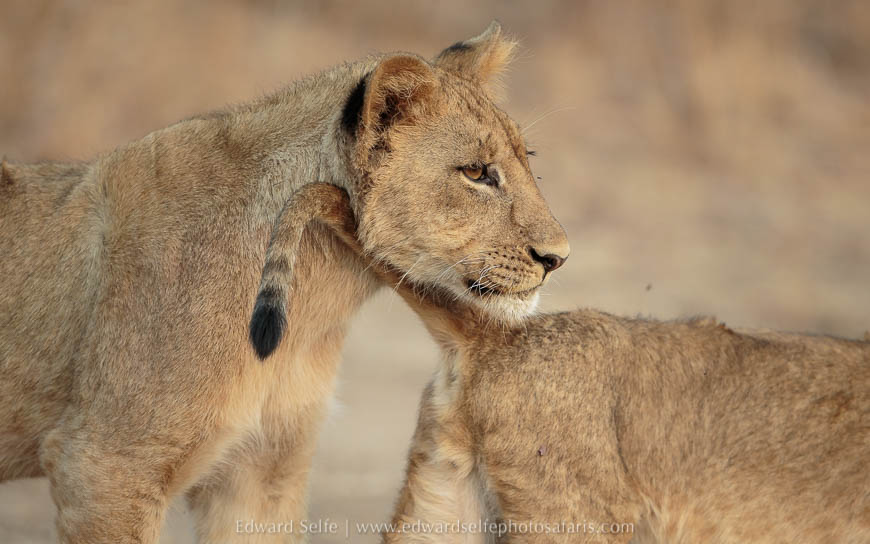
Later on in the week, we found “our” leopard again. We’d not seen her for a couple of days after the encounter with the impala carcass, so we were pleased to see her resting on the lowest branch of a sausage tree. As the light softened and the highlights coming through from behind lost their intensity, we talked about how to bank some shots at a high ISO, and then reduce the ISO step by step, giving increasingly slow shutter speeds until we found the balance point where we could get a sharp, low-ISO image.
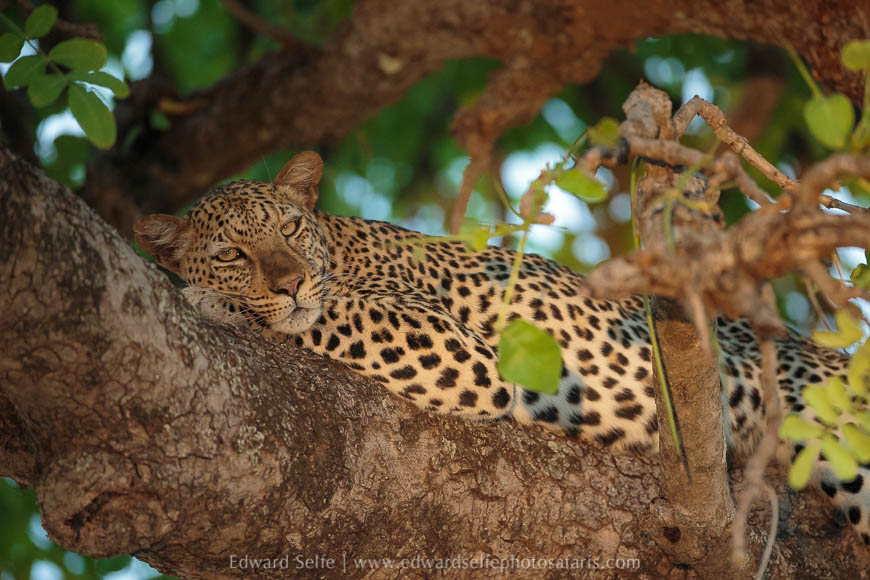
Our final very special sighting was a late evening visit by some elephants to the water’s edge. With very little light, we had to take care with shutter speeds, but the soft light was wonderful.
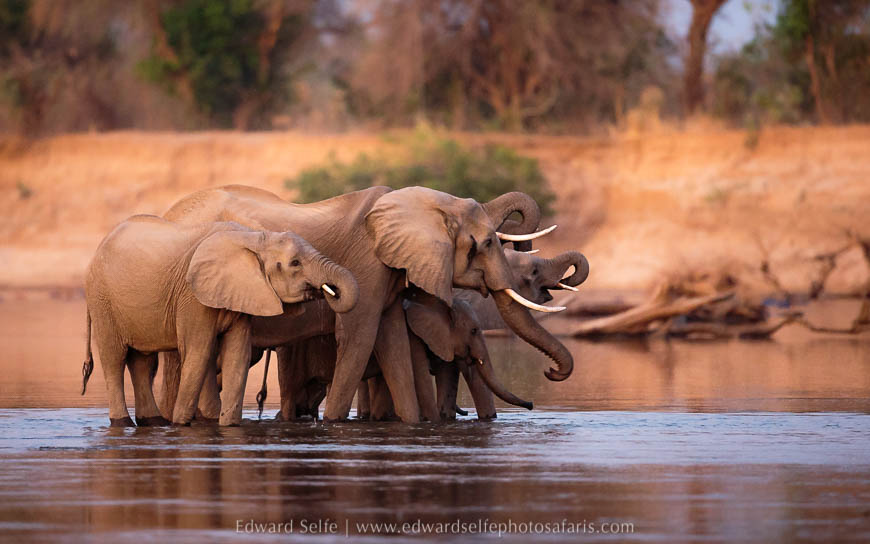
Having seen so much, we decided to take a drive to the local hot springs on the final afternoon at Kafunta. These stunning pools are a Mecca for wildlife and particularly for crowned cranes late in the dry season. The cranes were very skittish this time – though Sue, Michael and Debbie did get some super images on long lenses – but we had a wonderful time photographing zebras in the mopane woodland that surrounds the pans. This is one of my favourite images from the whole week.
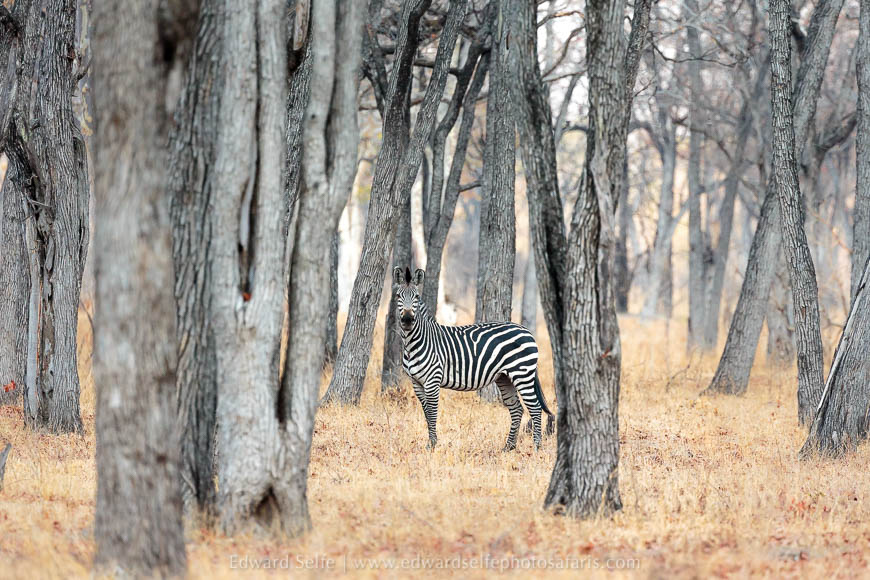
After a short morning drive, we transferred to Lion Camp, taking in the scenery alone the way, but moving quickly to keep the “air conditioning” going – after all, it’s pretty hot in October in Luangwa! The grassland and forests around Lion Camp are so rich in game that I was full of hopes and confidence for the second week of our trip.
Heading out for our first afternoon, we spent time with a large herd of giraffes just outside the camp. I love the backlit effect that soft light has on veronia bushes as they seed, so we worked on placing giraffes against that vegetation.
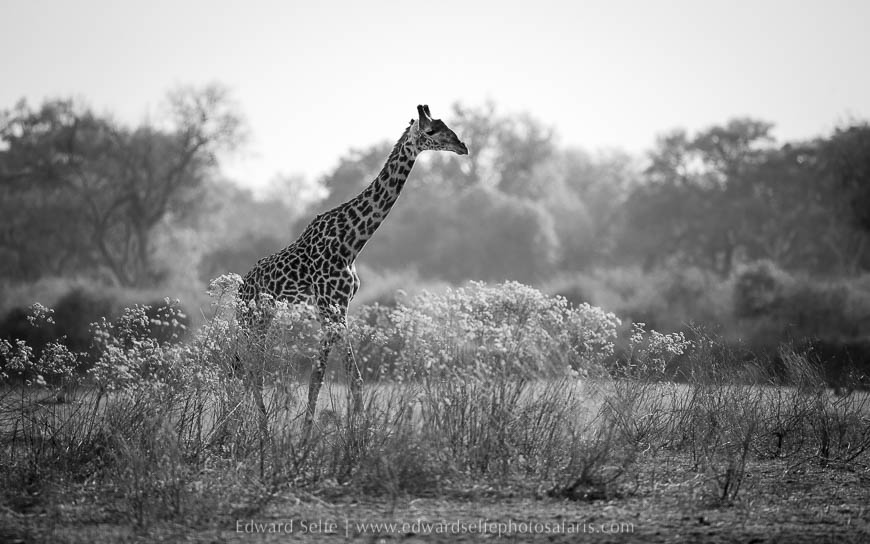
Later in the drive, we found an impala carcass abandoned at the base of a big tree – memories of Kafunta filled our heads! – so we scouted around and soon found Chipadzuwa the well-known leopard resting in a tree nearby. She didn’t seem keen to move so we left her for other options. Returning to the carcass later, we found not a leopard, but a genet feeding on the flesh! It was great to see a genet scavenging and a first for me!
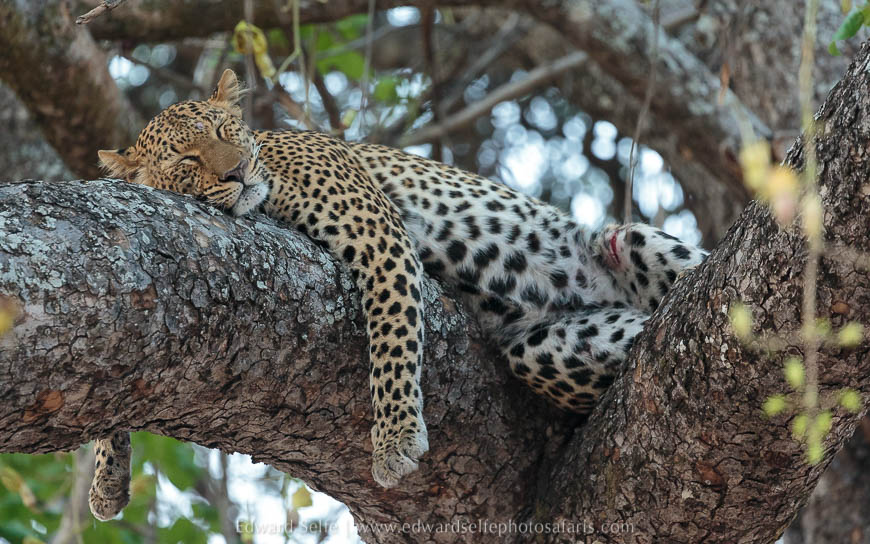
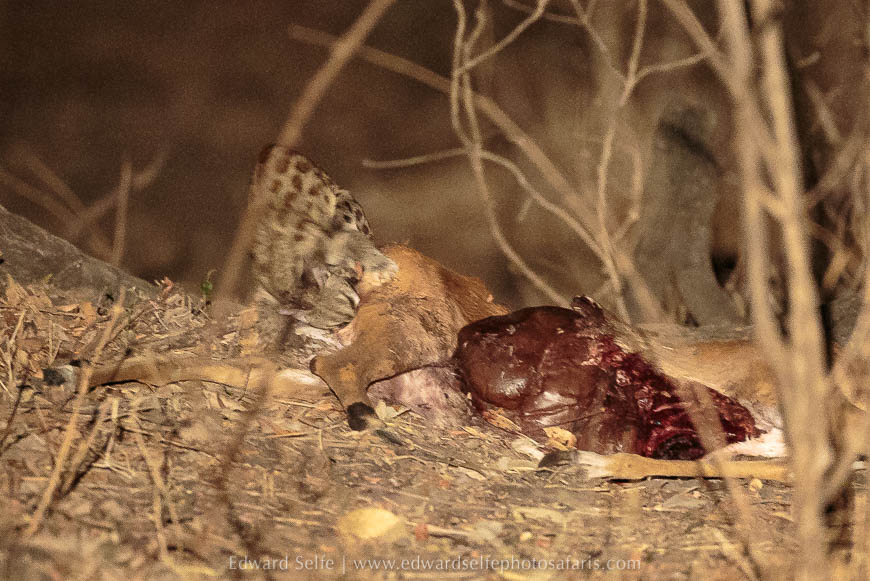
The following morning gave us no cat sighings, but lots of opportunities with other game; waterbuck against a forest of young winter thorns, a rolling zebra and a flock of Lillian’s love birds, followed by some panning blur on a herd of elephants and a hippo in very sticky mud!
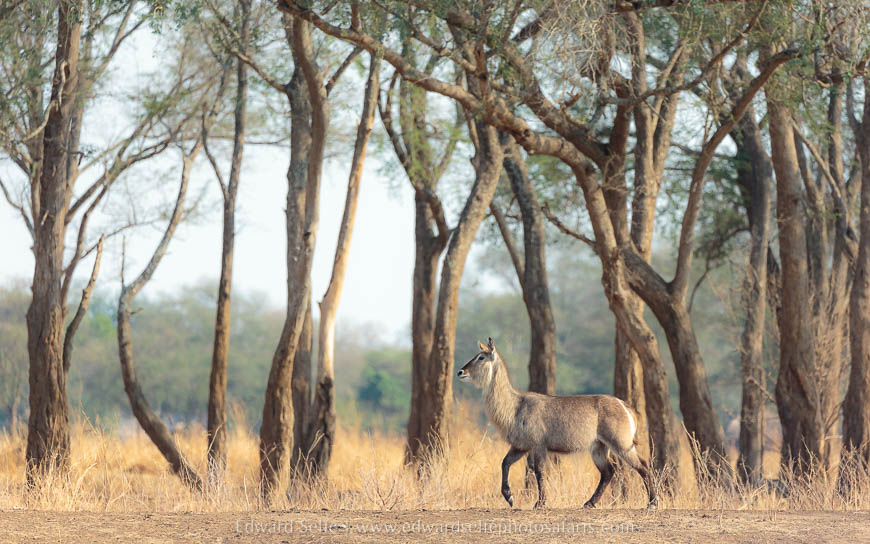
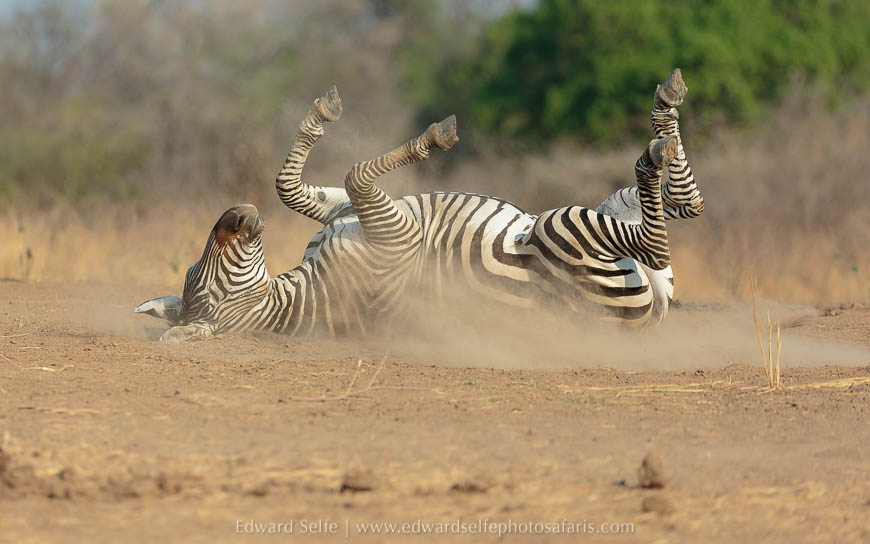
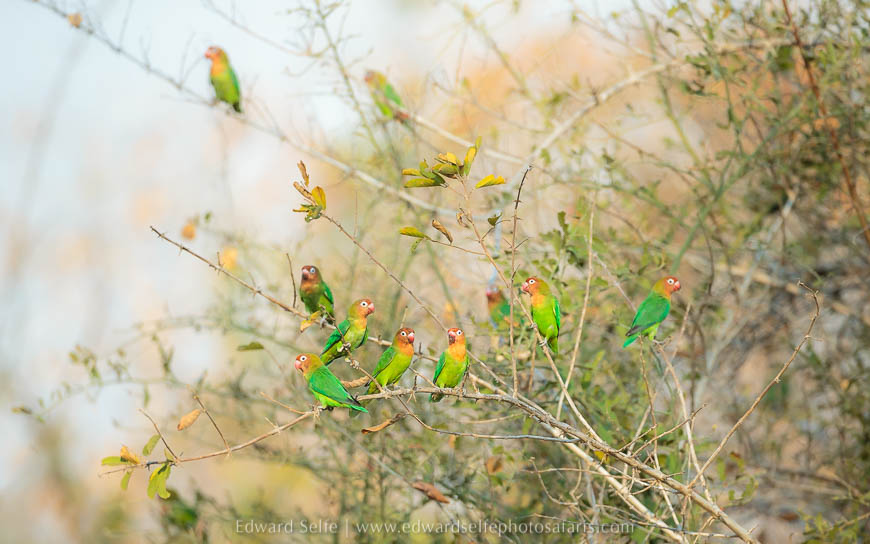
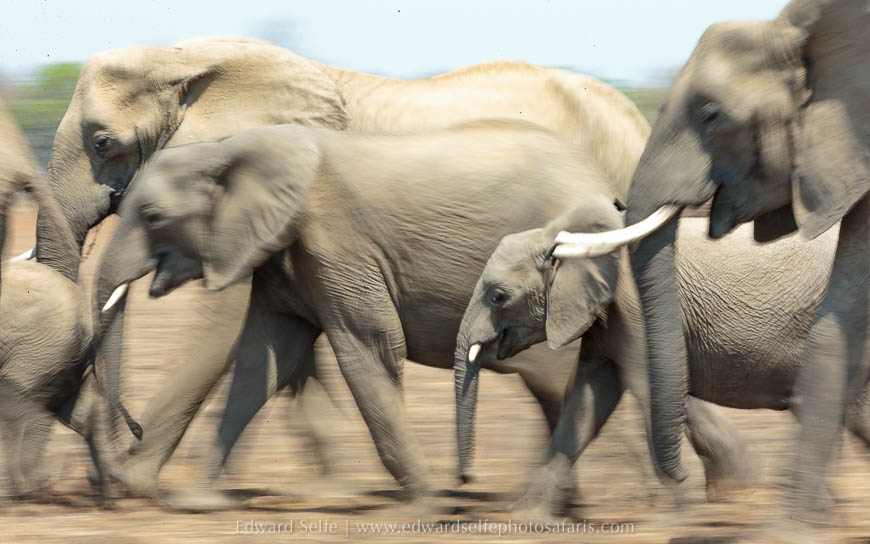
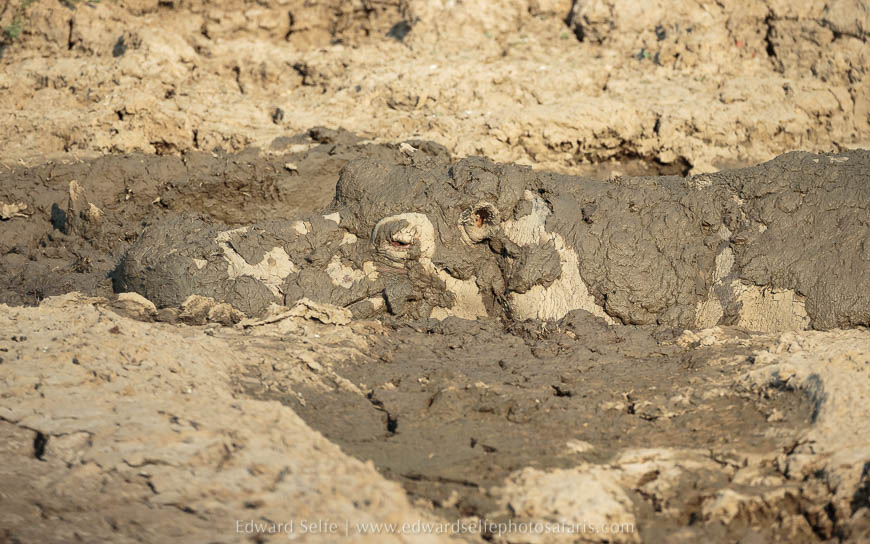
I hoped we might find Chipadzuwa in Fish Eagle lagoon in the afternoon – one of her favourite hang-outs – so I took my time moving through the trees, watching for signs from other creatures that she might be nearby. Hearing loud lilac-breasted roller calls, I was excited thinking that we had found her. But in fact, it was better: 4 rollers – 2 pairs from what we could see – were battling over the nesting sites in a dead deadwood tree. Rollers are punchy and aggressive birds, but this fight was like nothing I’d seen before. Over 40 minutes of relentless flight displays, bobbing, bowing, pecking and chasing was intermixed with aggressive attacks by all 4 birds. After taking hundreds of photos of them dive-bombing each other, our arms were tired so we simply watched until one pair overwhelmed the other and drove them from the tree!
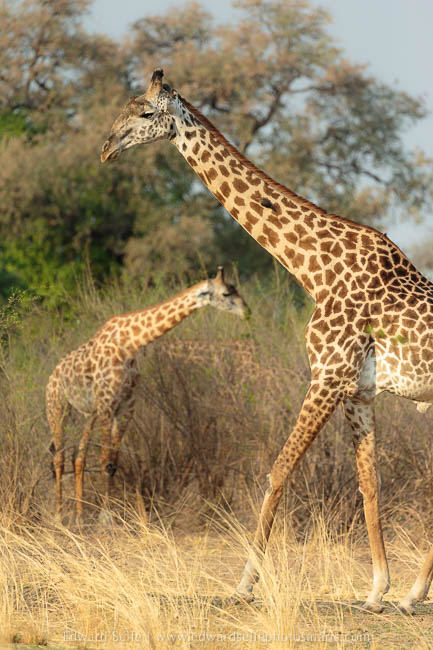
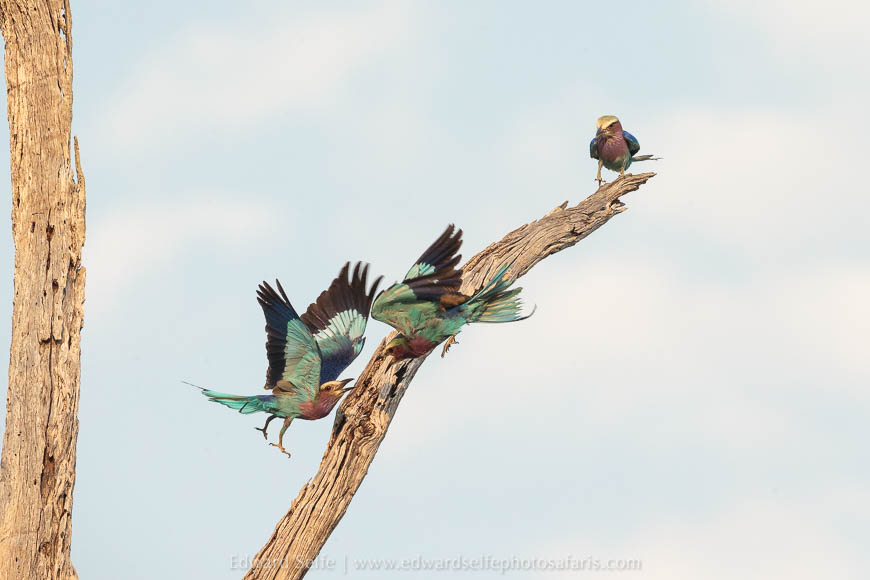
We didn’t find Chipadzuwa that afternoon, but we were very happy with our roller encounter! Moving off at sunset, I spotted a chance to get down below a large bull elephant as he was reaching for the trees. The last light of sunset was glowing behind; not visible to us, but seen by the camera, was the soft pink and blue colours showing through.
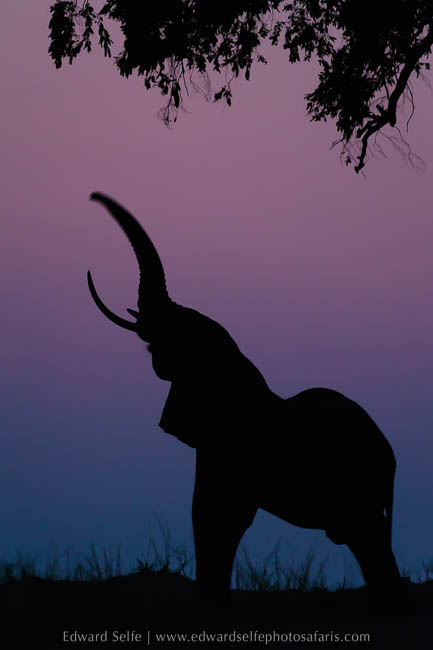
I really wanted to spend time with the Hollywood pride while we were at Lion Camp. But the arrival of 4 large males in the area earlier in the year had pushed the Hollywood girls north and occasionally across the river. Therefore it was great when we found them early one morning close to the river in the soft grassland dambos. We spent a couple of hours with them, hoping that they might move to the river or start a hunt, but they did little after some initial greetings!
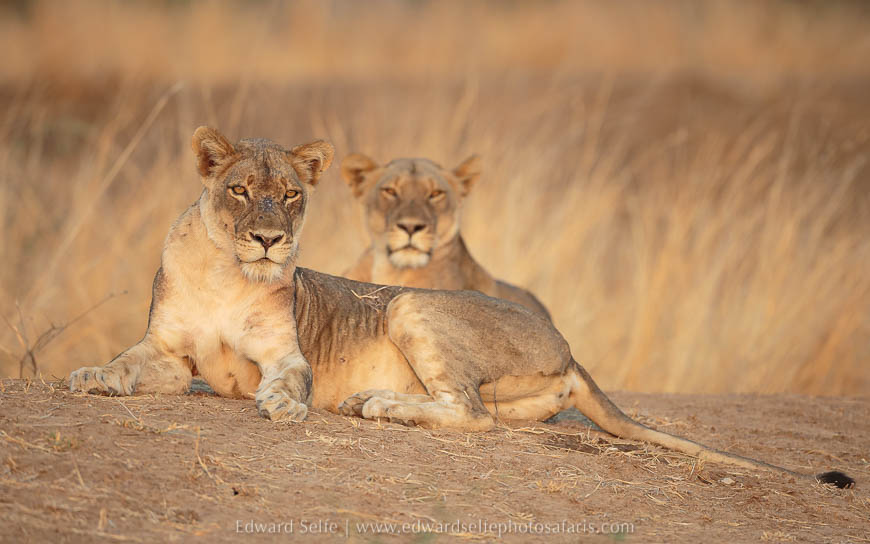
Leaving them to use the rest of the morning’s light, we worked on a silhouetted impala in the forest, tracked down a gabar goshawk that had just caught a little bee-eater, and ended up at the river where elephants often cross. We were treated to a superb crossing, with the whole herd rushing through the water towards us.
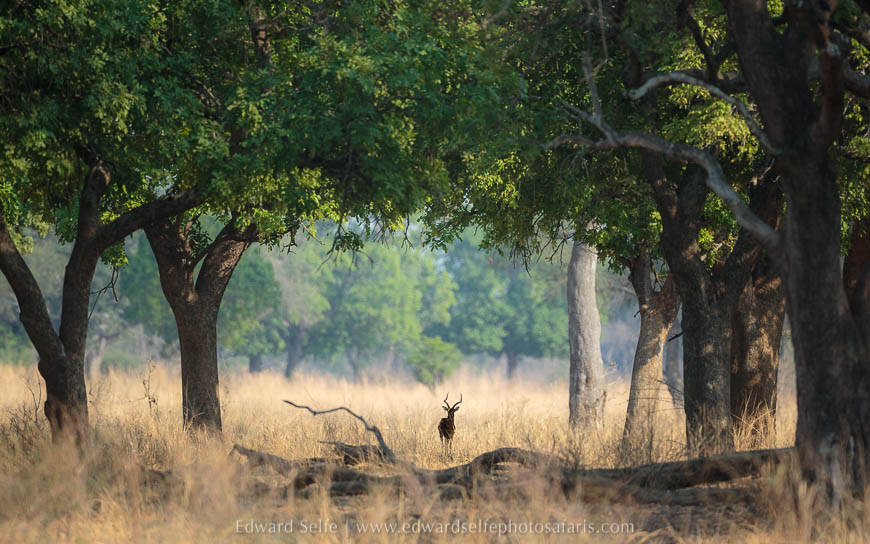
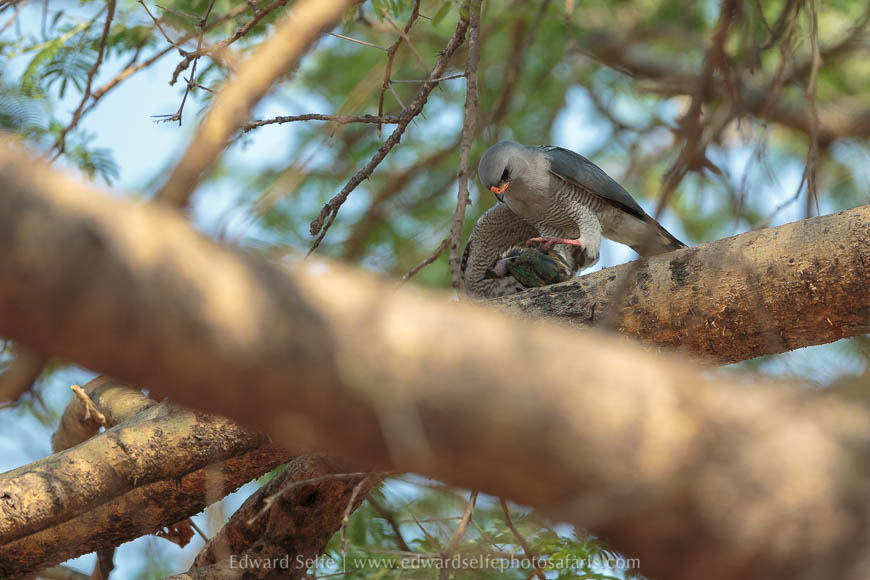
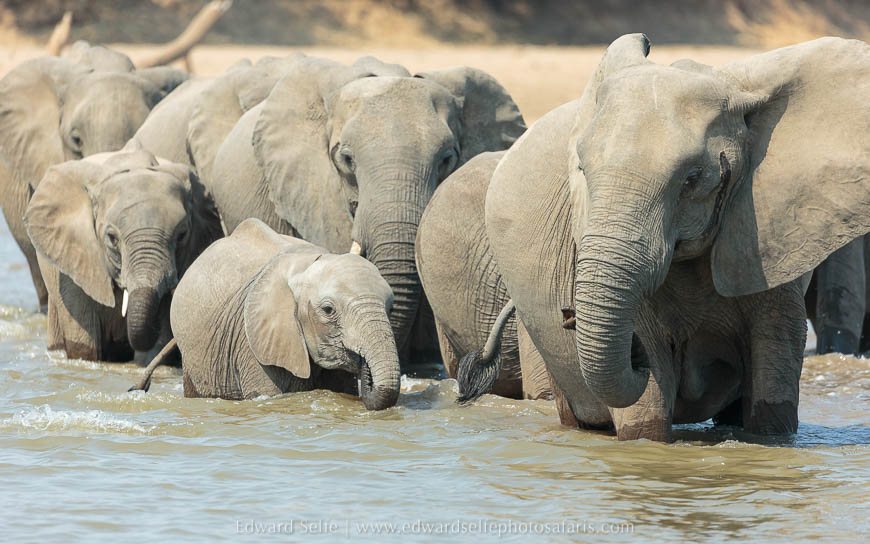
In the afternoon, I hoped that the Hollywood lions would hunt, so we sat with them for the last hour, but they didn’t move much. I wasn’t concerned though since I knew that we would have a chance to spotlight them in an interesting way when darkness fell. With some advice on how to make the best of this technique, we got some great shots.
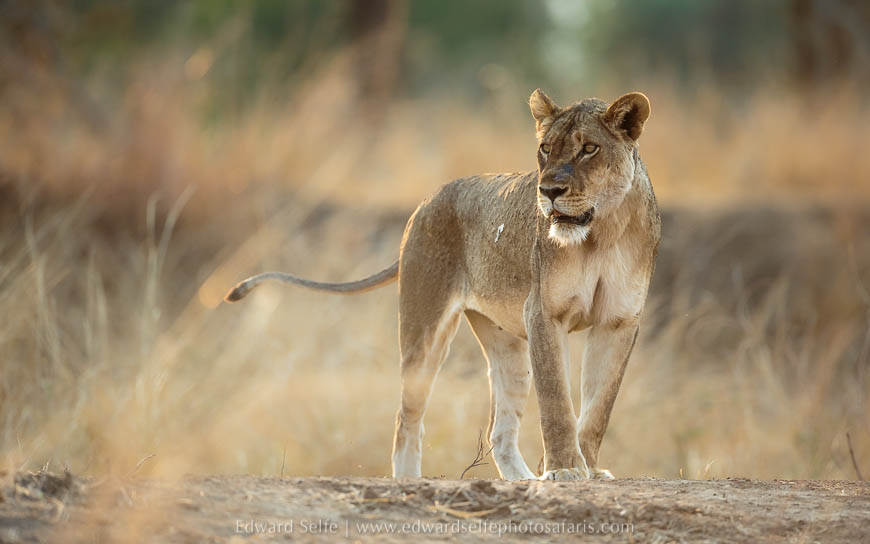
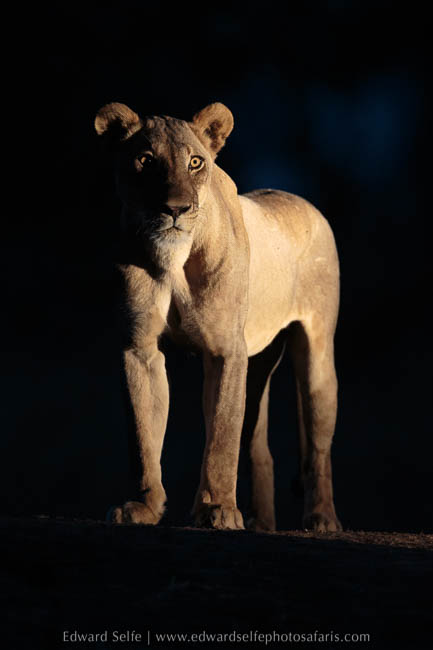
We were coming to the end of our time at Lion Camp, and I wanted to catch up with the 4 males who had been causing so much trouble this year. After a bit of time with an acrobatic elephant, and creeping slowly towards a warthog with an oxpecker on his ear(!), we found the 4 males resting by the road. They were lying in the sun and I suspected that they would soon move, so we sat with them. They definitely moved, giving us a wonderful show as they passed the vehicle, sniffed, checked us out and made us feel very small and vulnerable! One male had a large cut on his face where had had probably been fighting with other lions or with a reluctant prey target!
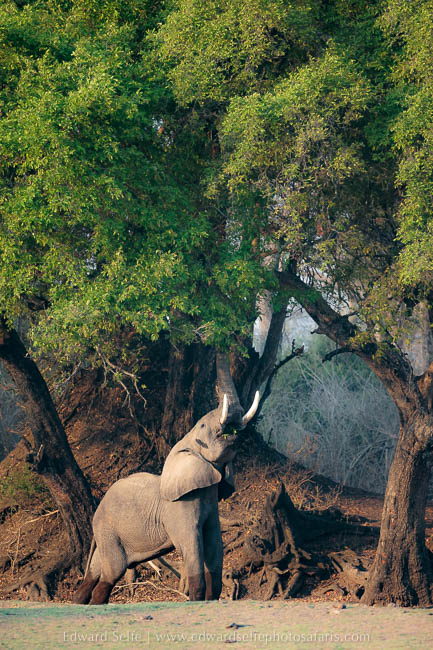
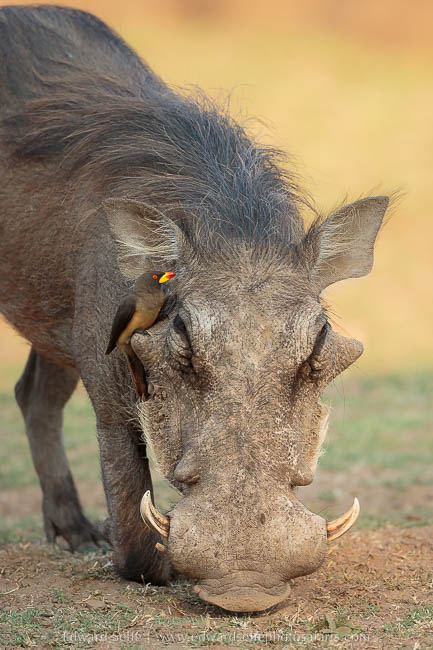
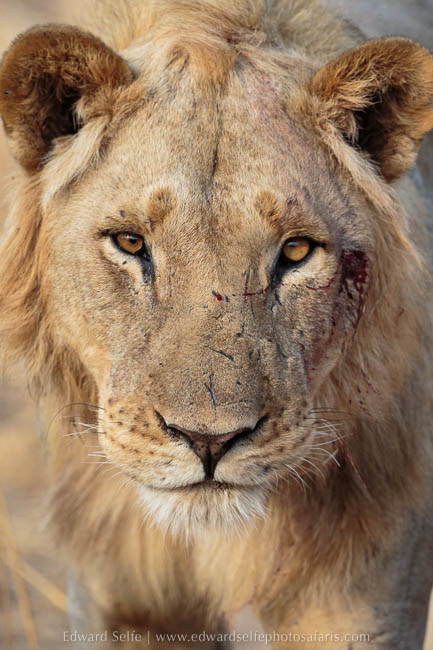
Once they took to the shade along the shelf near Lion Camp (in sight of camp in fact) we left them and headed to the river. As we arrived, a huge herd of buffalo began to appear from the far bank and descend to drink from the narrow channel. I talked to my guests about how to make sense of such a huge and complex subject; 500 buffalo moving up and down the bank is quite daunting, but we all left with some great photos.
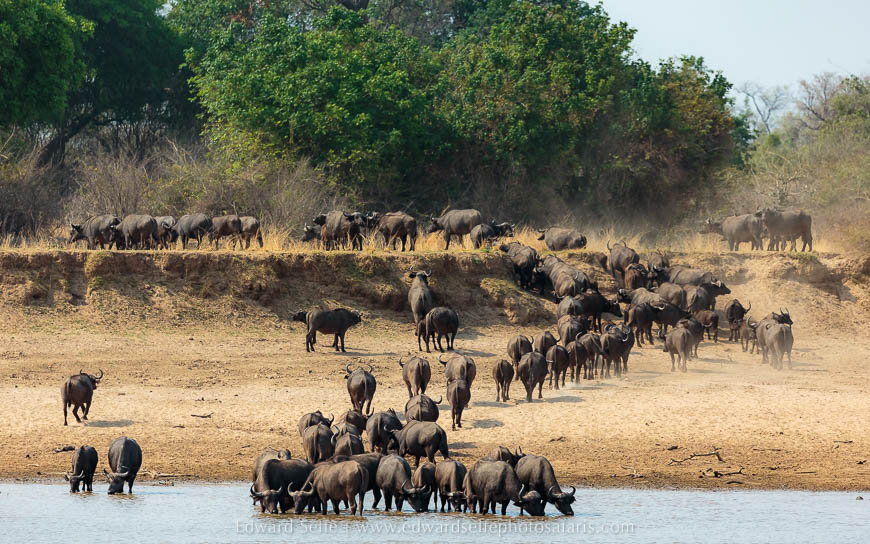
We’d been blessed with great light throughout the trip, but the last afternoon was cloudy. I had planned to spend time in the ebony grove, but this would not have been fruitful with thick cloud, so we headed to the plains where I hoped we could shoot some elephants from a low angle as they emerged from the woodland and headed for the grassland during the night. It worked out perfectly, with families, bull groups and youngsters mingling together and giving us lots of photo chances.
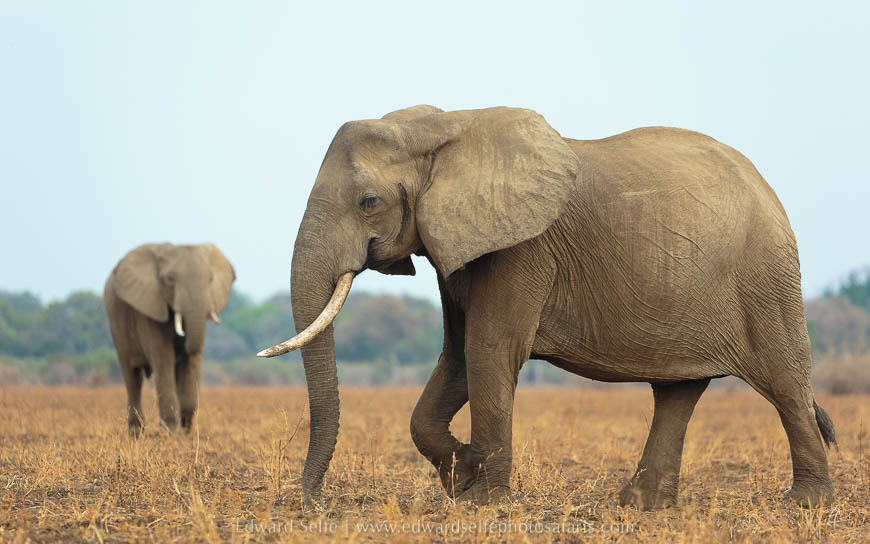
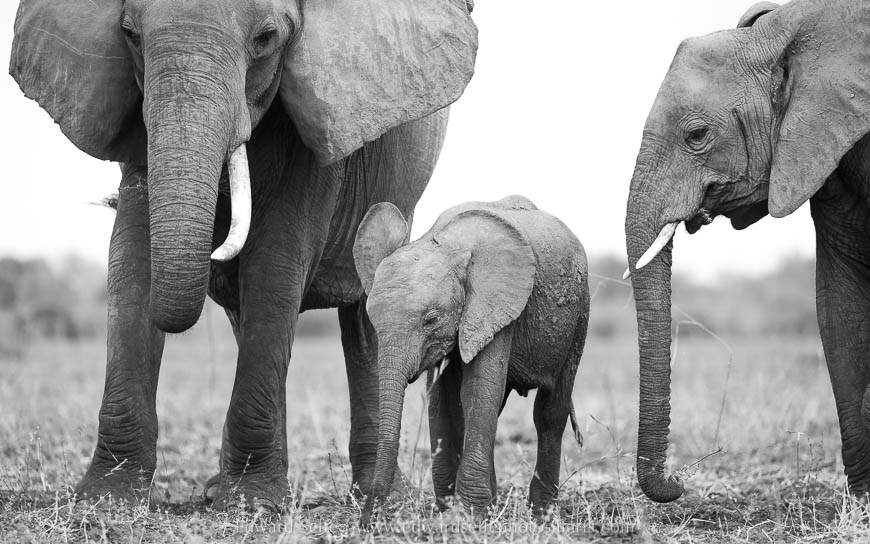
My guests were on the lunchtime flight, but I wanted to fit in as much safari as I could so I offered them a short morning drive on our last day. It turned out to be a great idea since we saw a hyaena feeding her cub at a den hole, we played with hippos in golden water at the river, and spent the last hour at a very active carmine bee-eater colony! That would make up a pretty good safari in most National Parks and we enjoyed it in 2 hours on the last morning before heading back to pack and leave for the airport! Luangwa is truly amazing!
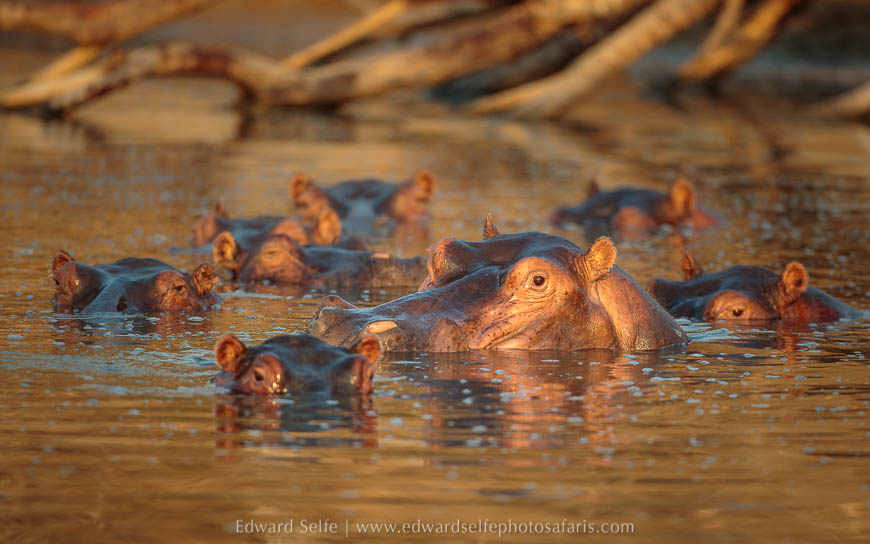
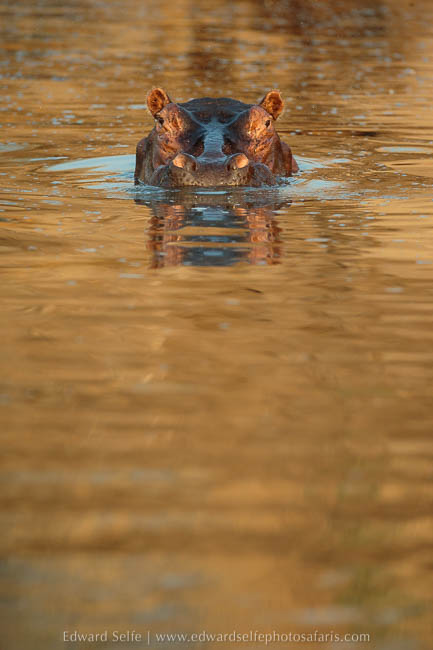
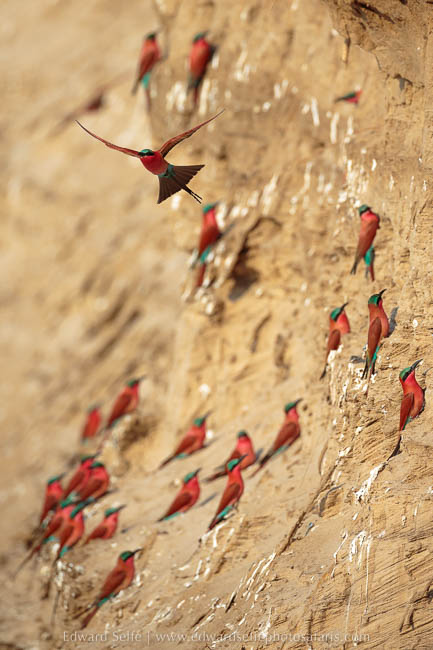
I was sad to say good bye to safaris for the season, and to these guests in particular, but I hope that they’ll be back and I am already looking forward to what 2019 has in store. Much of the season is already booked up (with space in May and July only remaining) so get in touch if you are thinking of a Luangwa safari and would like to experience it with a guide who lives here year-round and knows it intimately.
